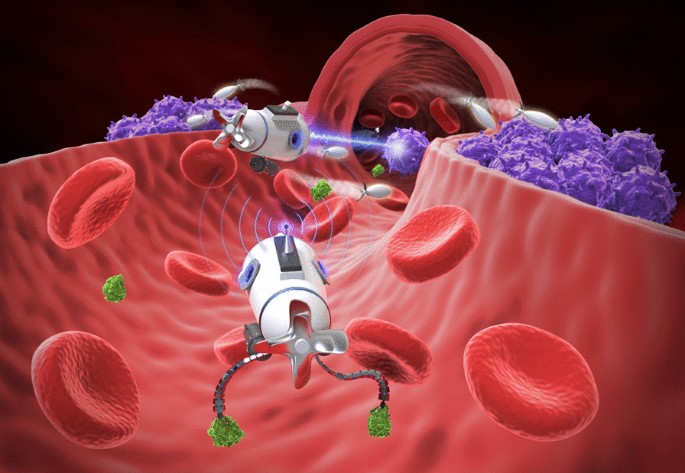The fight against cancer has been one of the most relentless battles in modern medicine. With millions of lives affected each year, the urgency to find more effective and less invasive treatments has never been higher. In a groundbreaking development, researchers from the University of Delaware have made significant strides in this field by creating a new technology known as the "nano-bomb." This innovation, led by Assistant Professor Balaji Panchapakesan, promises to revolutionize cancer treatment by targeting and destroying cancer cells with unprecedented precision.
The Birth of Nano-Bombs: A Historical Perspective
To understand the significance of the nano-bomb, it's essential to delve into the history of cancer treatment. Traditionally, cancer has been treated with surgery, chemotherapy, and radiation therapy. While these methods have saved countless lives, they often come with severe side effects, primarily due to their inability to differentiate between healthy and cancerous cells. The need for targeted therapies that could selectively destroy cancer cells without harming the surrounding healthy tissue has been a long-standing goal in oncology.
The concept of using nanoscale materials for medical purposes emerged in the late 20th century. Nanotechnology, the science of manipulating matter at the atomic and molecular scale, opened up new possibilities for medicine. Researchers began to explore the potential of nanoparticles to deliver drugs directly to cancer cells, thereby minimizing the damage to healthy tissue. However, the idea of using these particles to create localized explosions, or "nano-bombs," represents a novel approach that could mark a turning point in cancer treatment.
The Science Behind Nano-Bombs: Carbon Nanotubes and Light
The University of Delaware team's breakthrough centers around the use of carbon nanotubes—tiny cylindrical structures made of carbon atoms. Carbon nanotubes are known for their exceptional strength, electrical conductivity, and unique heat properties. When exposed to certain wavelengths of light, these nanotubes can absorb energy and rapidly convert it into heat.
In their research, Assistant Professor Balaji Panchapakesan and his team discovered that by carefully controlling the exposure of carbon nanotubes to light, they could create localized explosions at the nanoscale. These "nano-bombs" generate intense heat in a highly focused area, sufficient to destroy cancer cells. Importantly, this process can be fine-tuned to target only the cancerous cells, sparing the surrounding healthy tissue from damage.
The ability to deliver such precise and localized treatment is a significant advancement over traditional methods. By using the unique properties of carbon nanotubes, the nano-bomb technology promises to address one of the most significant challenges in cancer treatment—how to effectively destroy cancer cells without causing collateral damage to the patient’s body.
The Present: Real-World Applications and Clinical Implications
As of today, the nano-bomb technology is still in the experimental stages, but the results so far have been promising. Laboratory tests have demonstrated the effectiveness of nano-bombs in destroying cancer cells while leaving nearby healthy cells unharmed. These findings suggest that nano-bombs could be a powerful tool in the fight against cancer, offering a more targeted and less invasive alternative to conventional treatments.
The potential applications of nano-bombs extend beyond cancer treatment. The precise control that this technology offers could be applied to other areas of medicine, such as targeted drug delivery, where the goal is to release medication only at the site of disease. This could lead to more effective treatments for a range of conditions, with fewer side effects.
However, there are still many challenges to overcome before nano-bombs can be widely used in clinical settings. One of the primary concerns is ensuring that the technology is safe for human use. While the initial results are encouraging, more research is needed to understand the long-term effects of carbon nanotubes in the body and to develop methods for safely delivering and activating them within patients.
The Future: A New Era in Cancer Treatment
The future of cancer treatment may very well be shaped by innovations like the nano-bomb. As research progresses, we can expect to see this technology refined and potentially integrated into the broader arsenal of cancer therapies. The ability to target and destroy cancer cells with such precision could lead to treatments that are not only more effective but also more personalized, tailored to the specific needs of each patient.
Looking ahead, the integration of nanotechnology with other emerging fields, such as robotics and artificial intelligence, could further enhance the capabilities of nano-bombs. For example, robotic systems could be used to deliver nano-bombs with pinpoint accuracy, guided by real-time data and AI-driven analysis of the tumor environment. This could lead to a new generation of smart, automated treatments that are both highly effective and minimally invasive.
Moreover, the development of nano-bombs is likely to inspire further innovations in cancer treatment and other areas of healthcare. As researchers continue to explore the potential of nanotechnology, we may see the emergence of new therapies that are as revolutionary as the nano-bomb itself.
Conclusion
The creation of nano-bombs by researchers at the University of Delaware represents a significant leap forward in the fight against cancer. By harnessing the unique properties of carbon nanotubes and light, this technology offers a new way to target and destroy cancer cells with unprecedented precision. While still in the early stages of development, nano-bombs hold the promise of transforming cancer treatment, making it more effective and less harmful to patients.
As we look to the future, the continued advancement of nano-bombs and other nanotechnology-based therapies could usher in a new era of healthcare, where treatments are more personalized, precise, and safe. This breakthrough is not just a step forward in cancer treatment—it is a glimpse into the future of medicine itself.
Syed Salman Mehdi, LinkedIn, email: salmanmehdi128@gmail.com
#Robot #cancer #healthcare #sweden #tech #technology #startups #innovation #news















It’ll be 10 years before a patient can get this in the U.S. Assuming big pharm doesn’t block it
ReplyDelete